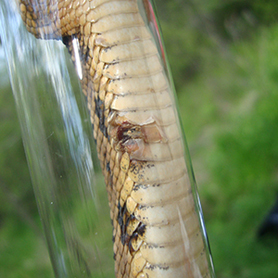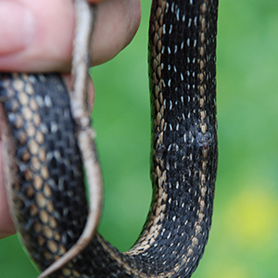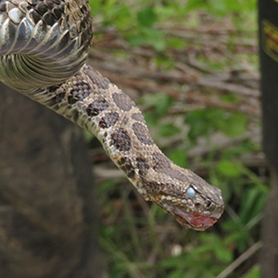Snake fungal disease
Timber rattlesnake with SFD lesion.
© Josh Kapfer
Common garter snake with raised bumps, indicative of SFD.
© Erik Wild
Eastern massasauga with swollen mouth, indicative of SFD.
© DNR FILES
Snake fungal disease (SFD) is an emerging disease that impacts numerous species of snakes and has been found throughout much of the eastern United States. It is caused by a fungus, Ophidiomyces ophiodiicola, and can cause lumps along the snake’s face, neck and body. In other snakes, skin blisters or scabby areas may be the only sign of disease.
Snake fungal disease has the potential to decimate local snake populations because it can prevent snakes from effectively feeding and drinking and makes them more susceptible to predators
The disease has been found in 14 of Wisconsin’s 21 snake species.
Much is still unknown about SFD and, therefore, several groups have developed FAQs.
- Snake Fungal Disease in Wisconsin FAQ [PDF]
- Northeast Partners for Amphibian and Reptile Conservation Snake Fungal Disease FAQ [exit DNR]
Report a snake with signs of this disease
Citizens, researchers and biologists are encouraged to report all snakes with signs of this disease. If you see an infected animal, please note the following:
- date;
- exact location (see the map of the known extent of the disease);
- species;
- symptoms; and
- photographs of lesions, bumps or scabs.
Help monitor the health of Wisconsin’s wildlife by reporting your sightings of sick or dead snakes to your local DNR office or email the Wisconsin DNR.



